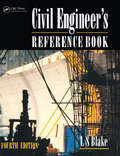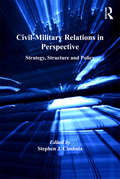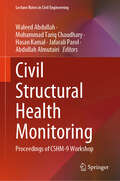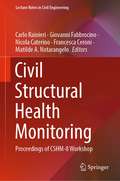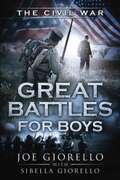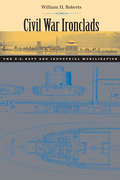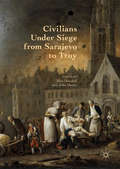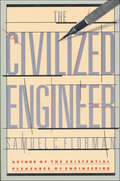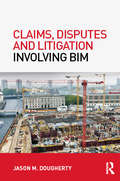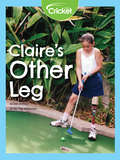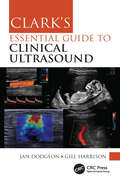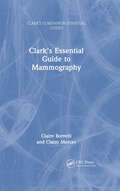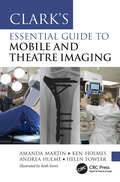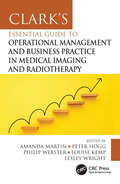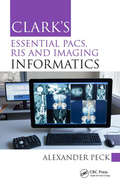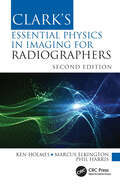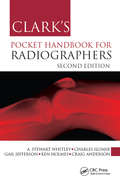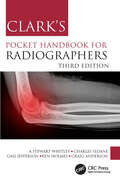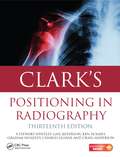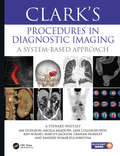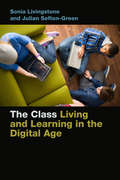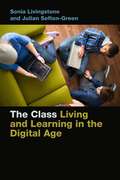- Table View
- List View
Civil Engineer's Reference Book
by L S BlakeAfter an examination of fundamental theories as applied to civil engineering, authoritative coverage is included on design practice for certain materials and specific structures and applications. A particular feature is the incorporation of chapters on construction and site practice, including contract management and control.
Civil Liability and Financial Security for Offshore Oil and Gas Activities
by Michael FaureCivil Liability and Financial Security for Offshore Oil and Gas Activities provides insights into the liability and compensation regime for offshore-related damage. The book analyses the legal regime in a variety of states (including the US and the UK) as well as the EU regime. In addition, the various compensation mechanisms and amounts available today to compensate offshore-related damage are described and critically analysed. Moreover, the book is based on in-depth interviews with a wide variety of relevant stakeholders including insurers, representatives from supervisory authorities, and oil and gas producers. This volume also provides a variety of policy recommendations, formulated to provide an optimal compensation regime for offshore-related damage.
Civil-Military Relations in Perspective: Strategy, Structure and Policy
by Stephen J. CimbalaThe topic of civil-military relations has high significance for academics, for policy makers, for military commanders, and for serious students of public policy in democratic and other societies. The post-Cold War and post-9-11 worlds have thrown up traditional as well as new challenges to the effective management of armed forces and defense establishments. Further, the present century has seen a rising arc in the use of armed violence on the part of non-state actors, including terrorists, to considerable political effect. Civil-military relations in the United States, and their implications for US and allied security policies, is the focus of most discussions in this volume, but other contributions emphasize the comparative and cross-national dimensions of the relationship between the use or threat of force and public policy. Authors contributing to this study examine a wide range of issues, including: the contrast between theory and practice in civil-military relations; the role perceptions of military professionals across generations; the character of civil-military relations in authoritarian or other democratically-challenged political systems; the usefulness of business models in military management; the attributes of civil-military relations during unconventional conflicts; the experience of the all-volunteer force and its meaning for US civil-military relations; and other topics. Contributors include civilian academic and policy analysts as well as military officers with considerable academic expertise and experience with the subject matter at hand.
Civil Structural Health Monitoring: Proceedings of CSHM-9 Workshop (Lecture Notes in Civil Engineering #516)
by Waleed Abdullah Muhammad Tariq Chaudhary Hasan Kamal Jafarali Parol Abdullah AlmutairiThis book gathers the latest advances and innovations in the field of structural health monitoring, as presented at the 9th Civil Structural Health Monitoring Workshop (CSHM-9), held in Kuwait on February 12–14, 2024. It discusses emerging challenges in civil SHM and more broadly in the fields of smart materials and intelligent systems for civil engineering applications. The contributions cover a diverse range of topics, including applications of SHM to civil structures and infrastructures, innovative sensing solutions for SHM, data-driven damage detection techniques, nonlinear systems and analysis techniques, influence of environmental and operational conditions, aging structures and infrastructures in hazardous environments, and SHM in earthquake prone regions. Selected by means of a rigorous peer-review process, they will spur novel research directions and foster future multidisciplinary collaborations.
Civil Structural Health Monitoring: Proceedings of CSHM-8 Workshop (Lecture Notes in Civil Engineering #156)
by Carlo Rainieri Giovanni Fabbrocino Nicola Caterino Francesca Ceroni Matilde A. NotarangeloThis volume gathers the latest advances and innovations in the field of structural health monitoring, as presented at the 8th Civil Structural Health Monitoring Workshop (CSHM-8), held on March 31–April 2, 2021. It discusses emerging challenges in civil SHM and more broadly in the fields of smart materials and intelligent systems for civil engineering applications. The contributions cover a diverse range of topics, including applications of SHM to civil structures and infrastructures, innovative sensing solutions for SHM, data-driven damage detection techniques, nonlinear systems and analysis techniques, influence of environmental and operational conditions, aging structures and infrastructures in hazardous environments, and SHM in earthquake prone regions. Selected by means of a rigorous peer-review process, they will spur novel research directions and foster future multidisciplinary collaborations.
The Civil War (Great Battles for Boys)
by Joe Giorello Sibella GiorelloGreat Battles for Boys is a history series that sends young readers “into the fight.” Boys learn about the military leaders, weapons, and strategies that won—or lost—history's most important military battles. <p><p> The American Civil War <p> More Americans died in this war than all other wars combined—more than 600,000 soldiers. <p><p> But what REALLY happened? <p><p> From the first shots at Fort Sumter to the South's surrender at Appomattox, young readers move chronologically through 20 crucial battles, covering all four years of the Civil War. They'll discover which strategies, tactics, and weapons were used, and which military leaders won victory—or suffered defeat.
Civil War Ironclads: The U.S. Navy and Industrial Mobilization (Johns Hopkins Studies in the History of Technology)
by William H. RobertsHonorable Mention, Science and Technology category, John Lyman Book Awards, North American Society for Oceanic HistoryCivil War Ironclads supplies the first comprehensive study of one of the most ambitious programs in the history of naval shipbuilding. In constructing its new fleet of ironclads, William H. Roberts explains, the U.S. Navy faced the enormous engineering challenges of a largely experimental technology. In addition, it had to manage a ship acquisition program of unprecedented size and complexity. To meet these challenges, the Navy established a "project office" that was virtually independent of the existing administrative system. The office spearheaded efforts to broaden the naval industrial base and develop a marine fleet of ironclads by granting shipbuilding contracts to inland firms. Under the intense pressure of a wartime economy, it learned to support its high-technology vessels while incorporating the lessons of combat.But neither the broadened industrial base nor the advanced management system survived the return of peace. Cost overruns, delays, and technical blunders discredited the embryonic project office, while capital starvation and never-ending design changes crippled or ruined almost every major builder of ironclads. When Navy contracts evaporated, so did the shipyards. Contrary to widespread belief, Roberts concludes, the ironclad program set Navy shipbuilding back a generation.
Civilians Under Siege from Sarajevo to Troy
by John Horne Alex DowdallThis edited volume analyses siege warfare as a discrete type of military engagement, in the face of which civilians are particularly vulnerable. Siege warfare is a form of combat that has usually had devastating effects on civilian populations. From the near-contemporary Siege of Sarajevo to the real and mythical sieges of the ancient Mediterranean, this has been a recurring type of military engagement which, through bombardment, starvation, disease and massacre, places non-combatants at the heart of battle. To date, however, there has been little recognition of the effects of siege warfare on civilians. This edited volume addresses this gap. Using a distinctive regressive method, it begins with the present and works backwards, avoiding teleological interpretations that suggest the targeting of civilians in war is a modern phenomenon. Its contributors interrogate civilians' roles during sieges, both as victims and active participants; the laws and customs of siege warfare; its place in historical memory, and the ways civilian survivors have dealt with trauma. Its scope and content ensure that the collection is essential reading for all those interested in the place of civilians in war. Chapter 2 of this book is available open access under a CC BY 4. 0 license at link. springer. com
The Civilized Engineer
by Samuel C. FlormanCivil engineer Samuel C. Florman's The Civilized Engineer is aimed at both those observing and commenting externally on engineering, and the practicing engineer—to reveal something of the art behind great engineering achievements, and to stimulate debate upon the author's hypothesis that "in its moment of ascendance, engineering is faced with the trivialization of its purpose and the debasement of its practice."
Claims, Disputes and Litigation Involving BIM
by Jason M DoughertyAre you unsure about: the current US legal environment with respect to BIM and VDC? the evolving standards of care for design and construction professionals using BIM and VDC? what practical methods and techniques can be used for analyzing construction claims and disputes involving BIM technologies and VDC processes? Building Information Modeling (BIM) technologies and Virtual Design and Construction (VDC) processes are aggressively and fundamentally changing the design, construction and operation of buildings. Supporters of BIM have highlighted the potential these technologies have to reduce the need for claims, disputes and litigation, but evidence from several early sources shows they are not universally successful in this. This timely and unique book provides crucial new methods for analyzing construction disputes in this emerging AEC technological landscape. It explains how BIM & VDC has significantly altered the production and delivery of construction drawings, quantity surveys, and schedules, and how these changes might impact construction disputes. The findings and advice in this book are indispensable to any stakeholder in a construction project using BIM. It will help Contractors, Cost Managers, Architects, Building Designers, Quantity Surveyors, and Project Managers to navigate and understand their responsibilities and exposure to risk when working with this new technology.
Claire's Other Leg
by Deb AronsonClaire Williams was born with one leg much smaller than the other, but she doesn’t let that stop her from playing sports, jumping on trampolines, or wearing high heels! Read about how Claire is living a full life with the aid of a prosthetic leg.
Clark's Essential Guide to Clinical Ultrasound (Clark's Companion Essential Guides)
by Jan Dodgeon Gill HarrisonThis easy-to-understand pocketbook in the highly respected Clark’s stable of diagnostic imaging texts is an invaluable tool for students, sonographers and other ultrasound practitioners, providing practical guidance on clinical ultrasound procedures, summarising current relevant literature and professional body guidelines. The content is arranged by anatomical system and organ for ease of reference, with each section comprising a short introduction, the indications for the procedure, patient preparation, the imaging procedure itself, along with an image analysis, supported throughout by positioning photographs and clinical images. Clark’s Essential Guide to Clinical Ultrasound is ideal for all users of clinical ultrasound at both undergraduate and postgraduate level and will also provide a convenient distillation of the latest best practice and guidelines for sonographers, midwives, vascular technologists, ECG technologists, medical doctors, sports injury specialists, paramedics, and other health professionals.
Clark's Essential Guide to Mammography (Clark's Companion Essential Guides)
by Claire Borrelli Claire MercerThis easy-to-understand pocketbook in the highly respected Clark’s stable of imaging texts is an invaluable tool and training aid, providing essential information for mammographic positioning, technique and interpretation for mammography practitioners at all levels. Adopting a systematic and structured approach facilitating rapid reference in the clinical setting, the book covers general principles and all routine mammographic projections, including additional and adapted projections covered in a separate section, and is highly illustrated with clear explanatory line diagrams and imaging photographs. Clark’s Essential Guide to Mammography is ideal as an educational tool for trainee mammographers, trainee assistant and associate apprenticeship mammographers, mammography training teams and universities delivering mammography education and a convenient clinical guide for practising mammographers, including assistant and associate apprenticeship mammographers.
Clark’s Essential Guide to Mobile and Theatre Imaging (Clark's Companion Essential Guides)
by Helen Fowler Ken Holmes Amanda Martin Andrea HulmeThis easy-to-understand pocketbook in the highly respected Clark’s stable of diagnostic imaging texts is an invaluable tool for student and practising radiographers, providing practical guidance to undertaking a wide range of mobile and theatre imaging examinations in multiple locations − different theatre environments, the Emergency Department, Intensive Care Units, including Neonatal Intensive Care Units, and on general wards.Carrying out examinations outside the imaging suite can be particularly challenging, given the circumstances in which they are often requested, the condition of the patient and the complexity of the environment. Additionally, management of the team and area from a radiation protection point of view is the responsibility of the radiographer and requires excellent communication skills.Clark’s Essential Guide to Mobile and Theatre Imaging takes the systematic approach adopted within books in the Clark's family and is designed to be clear and consistent, in which each imaging location is explored, the challenges of each identified and possible solutions presented. A wide range of theatre procedures is included, as well as the imaging requirements of each, and common theatre practices, such as time out, are considered.
Clark's Essential Guide to Operational Management and Business Practice in Medical Imaging and Radiotherapy (Clark's Companion Essential Guides)
by Peter HoggThis easy-to-understand pocketbook in the highly respected Clark’s series of diagnostic imaging texts introduces students and practitioners to the concepts of management, leadership and business planning, and outlines the knowledge and skills required to maintain the daily functioning of a medical imaging and radiotherapy department. Recognising that the transition from clinical radiographer to team lead or manager can be challenging, the book provides a good knowledge of management functions that will assist in this development and enable further progression into operational management roles.Clark’s Essential Guide to Operational Management and Business Practice in Medical Imaging and Radiotherapy takes the systematic approach adopted within books in the Clark's series and is designed to be clear and consistent, introducing the reader to differing concepts of management. All involved in managing imaging delivery and practice, no matter what the area of service, will benefit greatly from this publication.
Clark's Essential PACS, RIS and Imaging Informatics (Clark's Companion Essential Guides)
by Alexander PeckImaging informatics is a complex and historically rapidly changing field, knowledge of which is central to the practice of all imaging specialists. This convenient pocket guide provides the foundations of knowledge in informatics, allowing radiographers in training and in practice, assistant practitioners and other allied health professionals to understand, use and develop more efficient ways of imaging that will in turn deliver improved patient care.
Clark's Essential Physics in Imaging for Radiographers (Clark's Companion Essential Guides)
by Ken Holmes Marcus Elkington Phil HarrisThe second edition of this easy-to-understand pocket guide remains an invaluable tool for students, assistant practitioners and radiographers. Providing an accessible introduction to the subject in a reader-friendly format, it includes diagrams and photographs to support the text. Each chapter provides clear learning objectives and a series of MCQs to test reader assimilation of the material. The book opens with overviews of image production, basic mathematics and imaging physics, followed by detailed chapters on the physics relevant to producing diagnostic images using X-rays and digital technologies. The content has been updated throughout and includes a new chapter on CT imaging and additional material on radioactivity, dosimetry, and imaging display and manipulation.Clark’s Essential Physics in Imaging for Radiographers supports students in demonstrating an understanding of the fundamental definitions of physics applied to radiography … all you need to know to pass your exams!
Clark's Pocket Handbook for Radiographers (Clark's Companion Essential Guides)
by A Stewart Whitley Charles Sloane Gail Jefferson Ken Holmes Craig AndersonDrawn from the bestselling Clark's Positioning in Radiography, this pocket handbook provides clear and practical advice to help radiographers in their day-to-day work. Designed for rapid reference, it covers how to position the patient and the central ray, describes the essential image characteristics and illustrates each radiographic projection with a positioning photograph and a radiograph.
Clark's Pocket Handbook for Radiographers (Clark's Companion Essential Guides)
by A Stewart Whitley Charles Sloane Gail Jefferson Ken Holmes Craig AndersonDrawn from the renowned reference Clark's Positioning in Radiography, this bestselling pocket handbook provides clear and practical advice to help radiographers in their day-to-day work. Designed and structured for rapid reference, it covers how to position the patient and image receptor as well as the direction and location of the beam, describes the essential image characteristics, and illustrates each radiographic projection with a positioning photograph and corresponding radiographic image.This third edition has been updated to include new positioning photographs reflecting the dominance of direct digital radiography detectors (DDRs), helpful information on the importance of optimisation, exposure factors and geometry in image production, evaluating exposure in digital imaging and aspects of bariatric imaging.
Clark's Positioning in Radiography 13E
by A. Stewart Whitley Gail Jefferson Ken Holmes Charles Sloane Craig Anderson Graham HoadleyFirst published in 1939, Clark's Positioning in Radiography is the preeminent text on positioning technique for diagnostic radiographers.Whilst retaining the clear and easy-to-follow structure of the previous edition, the thirteenth edition includes a number of changes and innovations in radiographic technique. The text has been extensively updated
Clark’s Procedures in Diagnostic Imaging: A System-Based Approach
by A Stewart Whitley Jan Dodgeon Angela Meadows Jane Cullingworth Ken Holmes Marcus Jackson Graham Hoadley Randeep KulshresthaBringing together conventional contrast media studies, computed tomography, ultrasound, magnetic resonance imaging, radionuclide imaging including hybrid imaging using SPECT-CT and PET-CT, DXA studies and digital interventional procedures into one volume, this definitive book is the essential source of information on the use and application of these imaging modalities in radiography. Taking a systemic anatomical approach, carefully designed to be clear and consistent throughout and mirroring that in the popular and established textbook Clark’s Positioning in Radiography, each chapter is highly illustrated and contains sections detailing anatomy, pathologic considerations, procedure methodology, and an evaluation of recommended imaging modalities. Reflecting the latest clinical imaging pathways and referral guidelines including IR(ME)R 2017, the Map of Medicine and RCR iRefer (8E), Clark’s Diagnostic Imaging Procedures will quickly become established as the standard textbook for students of radiography and radiographer assistant trainees and an invaluable desk reference for practising radiologists.
The Class: Living and Learning in the Digital Age (Connected Youth and Digital Futures #1)
by Sonia Livingstone Julian Sefton-GreenAn intimate look at how children network, identify, learn and grow in a connected world.Read Online at connectedyouth.nyupress.orgDo today’s youth have more opportunities than their parents? As they build their own social and digital networks, does that offer new routes to learning and friendship? How do they navigate the meaning of education in a digitally connected but fiercely competitive, highly individualized world?Based upon fieldwork at an ordinary London school, The Class examines young people's experiences of growing up and learning in a digital world. In this original and engaging study, Livingstone and Sefton-Green explore youth values, teenagers’ perspectives on their futures, and their tactics for facing the opportunities and challenges that lie ahead. The authors follow the students as they move across their different social worlds—in school, at home, and with their friends, engaging in a range of activities from video games to drama clubs and music lessons. By portraying the texture of the students’ everyday lives, The Class seeks to understand how the structures of social class and cultural capital shape the development of personal interests, relationships and autonomy. Providing insights into how young people’s social, digital, and learning networks enable or disempower them, Livingstone and Sefton-Green reveal that the experience of disconnections and blocked pathways is often more common than that of connections and new opportunities.
The Class: Living and Learning in the Digital Age (Connected Youth and Digital Futures #1)
by Sonia Livingstone Julian Sefton-GreenAn intimate look at how children network, identify, learn and grow in a connected world.Read Online at connectedyouth.nyupress.orgDo today’s youth have more opportunities than their parents? As they build their own social and digital networks, does that offer new routes to learning and friendship? How do they navigate the meaning of education in a digitally connected but fiercely competitive, highly individualized world?Based upon fieldwork at an ordinary London school, The Class examines young people's experiences of growing up and learning in a digital world. In this original and engaging study, Livingstone and Sefton-Green explore youth values, teenagers’ perspectives on their futures, and their tactics for facing the opportunities and challenges that lie ahead. The authors follow the students as they move across their different social worlds—in school, at home, and with their friends, engaging in a range of activities from video games to drama clubs and music lessons. By portraying the texture of the students’ everyday lives, The Class seeks to understand how the structures of social class and cultural capital shape the development of personal interests, relationships and autonomy. Providing insights into how young people’s social, digital, and learning networks enable or disempower them, Livingstone and Sefton-Green reveal that the experience of disconnections and blocked pathways is often more common than that of connections and new opportunities.
Class and the Color Line: Interracial Class Coalition In the Knights of Labor and the Populist Movement
by Joseph GerteisA lauded contribution to historical sociology, Class and the Color Line is an analysis of social-movement organizing across racial lines in the American South during the 1880s and the 1890s. The Knights of Labor and the Populists were the largest and most influential movements of their day, as well as the first to undertake large-scale organizing in the former Confederate states, where they attempted to recruit African Americans as fellow workers and voters. While scholars have long debated whether the Knights and the Populists were genuine in their efforts to cross the color line, Joseph Gerteis shifts attention from that question to those of how, where, and when the movements' organizers drew racial boundaries. Arguing that the movements were simultaneously racially inclusive and exclusive, Gerteis explores the connections between race and the movements' economic and political interests in their cultural claims and in the dynamics of local organizing. Interpreting data from the central journals of the Knights of Labor and the two major Populist organizations, the Farmers' Alliance and the People's Party, Gerteis explains how the movements made sense of the tangled connections between race, class, and republican citizenship. He considers how these collective narratives motivated action in specific contexts: in Richmond and Atlanta in the case of the Knights of Labor, and in Virginia and Georgia in that of the Populists. Gerteis demonstrates that the movements' collective narratives galvanized interracial organizing to varying degrees in different settings. At the same time, he illuminates the ways that interracial organizing was enabled or constrained by local material, political, and social conditions.
